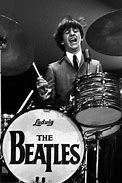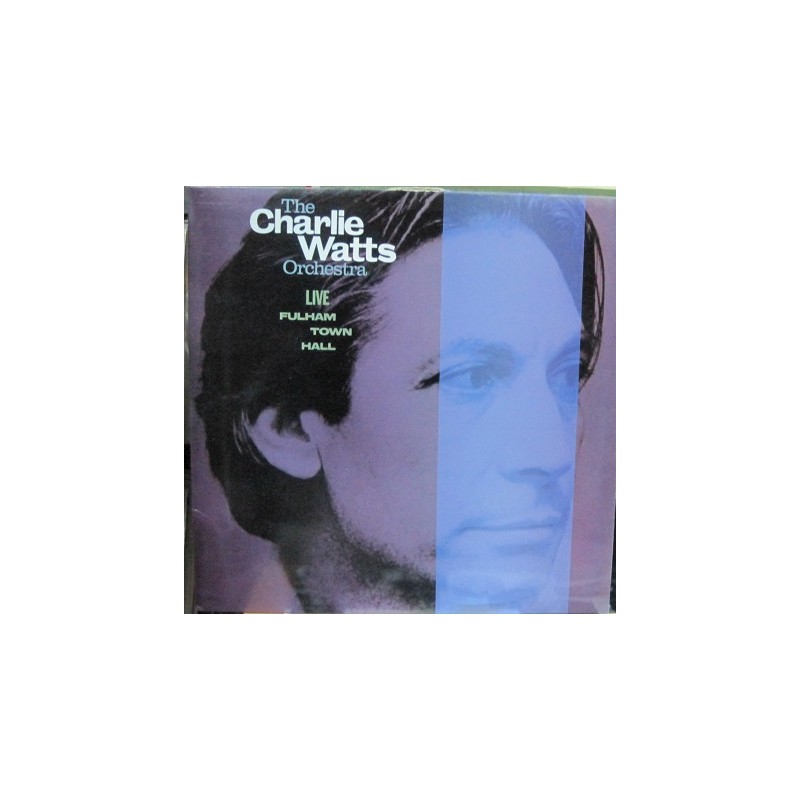STONES: rolling on or rolling over?
STONES: rolling on or rolling over?
asks Norman Warwick
It was may have been something as subtle and seemingly insignificant as the tapped count-in to Honky Tonk Woman or the throbbing sounds of It´s Only Rock And Roll, But I Like It, (which he reportedly didn´t !) but back in the sixties even I, a lyric reader pure and simple and with even less academic music knowledge than I have now, recognised that Charlie Watts was a great drummer. I rarely voiced that opinion though because I wasn´t at all sure, at fourteen or so, what made a drummer ´great´.

I was even a bit afraid of sounding like my dad, a pub and am-dram crooner of pieces from The Great American Songbook, who was in the habit of saying The Beatles were only successful because of the brilliance of Ringo´ s percussive work. Dad couldn´t tell me what was brilliant about it, though. Like all his Round Table cricket. playing, carnival-eventing, fund-raising mates he was just trying to show he was down with us kids.
The Beatles, then, though, were more representative of my love of pop music than were The Rolling Stones, though I loved Ruby Tuesday.
I do recall that at the end of the glorious sixties mates of mine who were Stones fans were concerned that perhaps the band might not continue after the tragic death of Brian Jones and by the time of the retirement of Bill Wyman in 1993 I was by then enough of a Stones fan myself to cross my fingers that they might soldier on.
Geoffrey Himes, writing recently in his Curmudgeon column at Paste On-Line suggests that `one could forgive the Rolling Stones for carrying on after the death of Brian Jones in 1969 and Bill Wyman’s retirement in 1993. They were important contributors to the legendary band but not essential. You could easily argue that Darryl Jones was as good a bassist as Wyman, and that Mick Taylor and then Ronnie Wood were improvements on Jones´.
It might be harder, perhaps to justify or to forgive The Stones for carrying on after the death of Charlie Watts on Tuesday 24th August 2021, at the age of 80.
In fact Mr Himes reminds us that Bruce Springsteen (right) once wrote:

´As much as Mick’s voice and Keith’s guitar, Charlie Watts’s snare sound is The Rolling Stones.” If you dig for the secret of the band’s chemistry, it’s the rhythmic tension between Keith Richards and Watts. Mick Jagger’s vocals are just the icing on the cake.
Listen to “Start Me Up,” a song so infectious that it’s still used to kick off many athletic events. It begins with one of Richards’ greatest guitar riffs: three suspended chords, a long pause and then the same cluster of three, repeated three times with descending pitch. The riff doesn’t really grab hold, though, till Watts taps the hi-hat and slams the snare just a hair behind Richards’ timing. And it’s that slight delay that keeps the listener spellbound. You’re already hooked before the singer opens his mouth.
Usually the listener doesn’t even know what’s happening, but one’s body wants the guitar and the snare to properly align or to clearly separate. They never do, however, so the body keeps waiting, keeps yearning for it to happen. It seems as if the song is always on the verge of clicking into place or completely falling apart, but it never does. And it’s that constant possibility of resolution or disintegration that makes the band’s best songs so thrilling.
Most of us think of a beat as a single point in time, but musicians as attuned as Richards and Watts hear a beat as a short span of time with a beginning, middle and end. With the guitar on the front end and the snare on the back end, they create musical drama that’s irresistible. It’s difficult to create and even harder to ignore´.
´Watts could pull this off´, says Mr Himes, ´because he was a 21-year-old jazz drummer before he joined The Rolling Stones on February 2, 1963, 58 years ago. He knew how to swing by displacing the accent just off the beat. He knew how to adjust to a bandleader who would make up things as he went along—whether it was Lester Young acolyte Dick Heckstall-Smith in Watts’ old band, Alexis Korner’s Blues Incorporated, or Keith Richards in his new band.
At first The Stones relied heavily on remaking American R&B hits by Chuck Berry, Bobby Womack, Solomon Burke and the like. As much as they tried to copy the originals, they couldn’t help injecting themselves into the music and creating something brand new. Not only the push-and-pull between Richards and Watts, but also the boyish sneer of Jagger’s vocals made the songs sound younger, jazzier, more British. And when Jagger and Richards started writing songs such as “Time Is on My Side” and “Congratulations,” they sounded more original still.

Reading that has just brought to mind a memory from more than twenty years later when American promoter Ian Johnson and I were visiting Gary Hall one of the great British songwriters. We were trying to write a song that might have ended up with a title such as Miss Saturday Night, and Ian and I were throwing in all kinds of disjointed lines while Gary looked on in that semi-amused way he had.
I thought we had a couple of ok verses and were ready for a bridge and Gary suddenly shook his long haír down and roared out a sample from Time Is On Our Side: it might have been borrowed but it revealed what made me consider him a great artist. Firstly he had picked a line from a song that perfectly set the time and location Ian and I were trying to write about. It also demonstrated that whatever genres Hall worked in he had a comprehensive awareness of, and maybe even an intuitive understanding of, a wide range of different genres. Interestingly, too, by taking a Stones line and setting it in the folksie genre I worked in, he sent me back down the sidetracks and detours of reappraisal.
Geoffrey Himes says that, like so many British bands, ´The Rolling Stones burst out of the London nightclub scene and rode The Beatles’ coattails to America. When The Beatles imploded in 1970, The Rolling Stones were left as the biggest rock ‘n’ roll band in the world. And they deserved the title, for the snare-and-guitar tension between Richards and Watts was never better than when a well-crafted Jagger-Richards composition was on top of it. And from 1965’s The Rolling Stones Now to 1981’s Tattoo You, such compositions filled every album with the perfect vehicles for the Richards-Watts tandem.
After 1981, the song-writing magic dried up, and The Stones became a repertory band, replaying their classic songs as the latter-day Count Basie Band or Frank Sinatra might. But it was still worthwhile to file into the local basketball arena to see The Stones one more time, for there was always a good chance that the Richards-and-Watts sparks might ignite one more time.

When I saw them at Washington’s football stadium in 1994, for example, the show began with Watts playing an unaccompanied solo built around the Bo Diddley beat (right). He had the vast crowd clapping along—always a bit ahead of him—before the rest of the band even took the stage. This led into Buddy Holly’s “Not Fade Away,” the first song on the band’s first U.S. album.
It was Watts again who lit a fire under the third song, “Tumbling Dice.” With Richards’ memorable intro still hanging in the air, the drummer knocked it into focus with his first snare hit. His subsequent crisp swing pattern allowed Richards to fill his guitar chords with intoxicating anticipations, drones and suspensions. Relative rarities such as “You Got Me Rocking,” “Memory Motel,” “Monkey Man” and The Temptations’ “I Can’t Get Next to You” kept the musicians interested in the show between the old hits.
Watts told interviewers that it often took him three or four shows on a Stones tour to get back to peak form. By the time the tour was over, he’d be playing really well and dreading the one-or-two-year layoff between tours. So he’d take his earnings from the road and invest them in the jazz bands of his dreams.
It might be the Charlie Watts Orchestra playing standards, or the Charlie Watts Quintet paying tribute to Charlie Parker. It might be a percussion ensemble co-led by American Jim Keltner paying tribute to bebop drummers. It might be Watts with the Danish Radio Big Band or a string section. These ensembles almost always played in nightclubs, the intimate surroundings Watts always liked best.

In 1987, I caught the Charlie Watts Orchestra (right) at the Bayou nightclub in D.C. The 32 musicians—a dozen reeds, a dozen brass and the eight-man rhythm section featuring three drummers—couldn’t all fit on the stage, so the pianist and two vibists set up on the floor. The all-British lineup featured avant-garde legend Evan Parker in a sterling sax section that also included Bobby Wellins, Don Weller and Roy Sidwell.
Watts was clearly having the time of his life. The drummer had always seemed the calm eye in the hurricane that was a Rolling Stones show, the stoic scholar on the pirate ship. But at the Bayou he was grinning from ear to ear, like there was nothing he enjoyed more than swinging as hard as he had rocked.
The Rolling Stones will most likely continue to tour without Watts. After all, they had already agreed to continue their current tour with Steve Jordan on drums after Watts was told by doctors to stay home and recuperate from recent surgery. Jordan is a gifted drummer and probably a better soloist than Watts. But he didn’t invent the sound of The Rolling Stones, and he can’t execute it with Watts’ superb control of tension.
Will the Stones continue to tour after this current run? It’s a lot of money to walk away from. If they do, the hardcore music fans will stay away, because the key element in the band’s sound, the give-and-take between Richards and Watts, will be gone. All that will be left will be the songbook and the celebrity. It will be like The Beach Boys with Mike Love and no Wilson brothers.
The more casual fans won’t notice the difference. But they may sense that something’s not quite right, that the old rhythmic friction is missing. They may chalk it up to old age or a bad night, but what will be missing is Charlie Watts´.
The prime source for this article was a piece written by Geoffrey Himes, for Paste on-line
In our occasional re-postings Sidetracks And Detours are confident that we are not only sharing with our readers excellent articles written by experts but are also pointing to informed and informative sites readers will re-visit time and again. Of course, we feel sure our readers will also return to our daily not-for-profit blog, knowing that we seek to provide core original material whilst sometimes spotlighting the best pieces from elsewhere, as we engage with genres and practitioners along all the sidetracks & detours we take.




Leave a Reply
Want to join the discussion?Feel free to contribute!